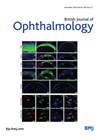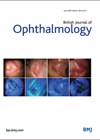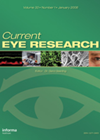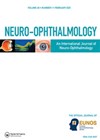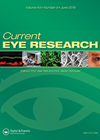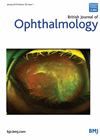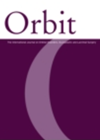
Journal Reviews
High rate of conversion from ocular hypertension (OH) to glaucoma (UG) in subjects with uveitis
This is a retrospective study from Auckland over a 10-year period including 188 eyes of 139 subjects with either OH or UG and were included for analysis with a mean follow-up of 9.9 years. The most common uveitis causes were...
High rate of conversion from ocular hypertension to glaucoma in subjects with uveitis
This is a retrospective study from Auckland over a 10-year period. A total of 188 eyes of 139 subjects with either ocular hypertension (OH) or uveitic glaucoma (UG) were included for analysis with a mean follow up of 9.9 years....
Inflammation and microvascular changes in diabetic retinopathy
Studies have shown that neurodegeneration and inflammation in the retina start early in diabetic retinopathy (DR) and can be present before the latter is clinically evident. The aim of this retrospective review of 99 diabetic patients was to evaluate retinal...
A novel way to distinguish between types of anterior ischaemic optic neuropathy
The authors evaluate the monocyte to high-density lipoprotein (HDL) ratio (MHR) in patients with arteritic and non arteritic anterior ischaemic optic neuropathy (A-AION / NA-AION). A distinction between the two types of AION is essential to begin appropriate treatment, which...
Topical nonsteroidal ant-inflammatory drugs (NSAIDs) in patients undergoing cataract surgery
Inflammation is a major risk factor for the development of cystoid macular oedema (CMO) after cataract surgery, leading to breakdown of the blood-retina barrier. There is a correlation between severity of CMO and level of postoperative inflammation. Laser flare meter...
Diclofenac versus Bromfenac after cataract surgery
Non-steroidal anti-inflammatory drugs (NSAIDs) are commonly used after cataract surgery to reduce inflammation and cystoid macular oedema (CMO). Diclofenac 0.1% is used three to five times daily for 28 days and Bromfenac 0.09% twice daily for 14 days postoperatively. The...
Features of Behcet’s disease
This is a retrospective single centre study from Paris, France, between the periods of 1986 to 2015. Twenty-nine out of 217 (13.3%) neuro-Behcet’s disease (NBD) patients presented with neuro-ophthalmic manifestations (55% of men and mean age of 28 years). Sixteen...
Bisphosphonates can cause orbital inflammation
The authors describe four patients with bisphosphonate induced orbital inflammation and review a further 25 cases in the literature. Intravenous zoledronate was the most common precipitant (76% of cases) with the mean time until onset of inflammation being three days...

